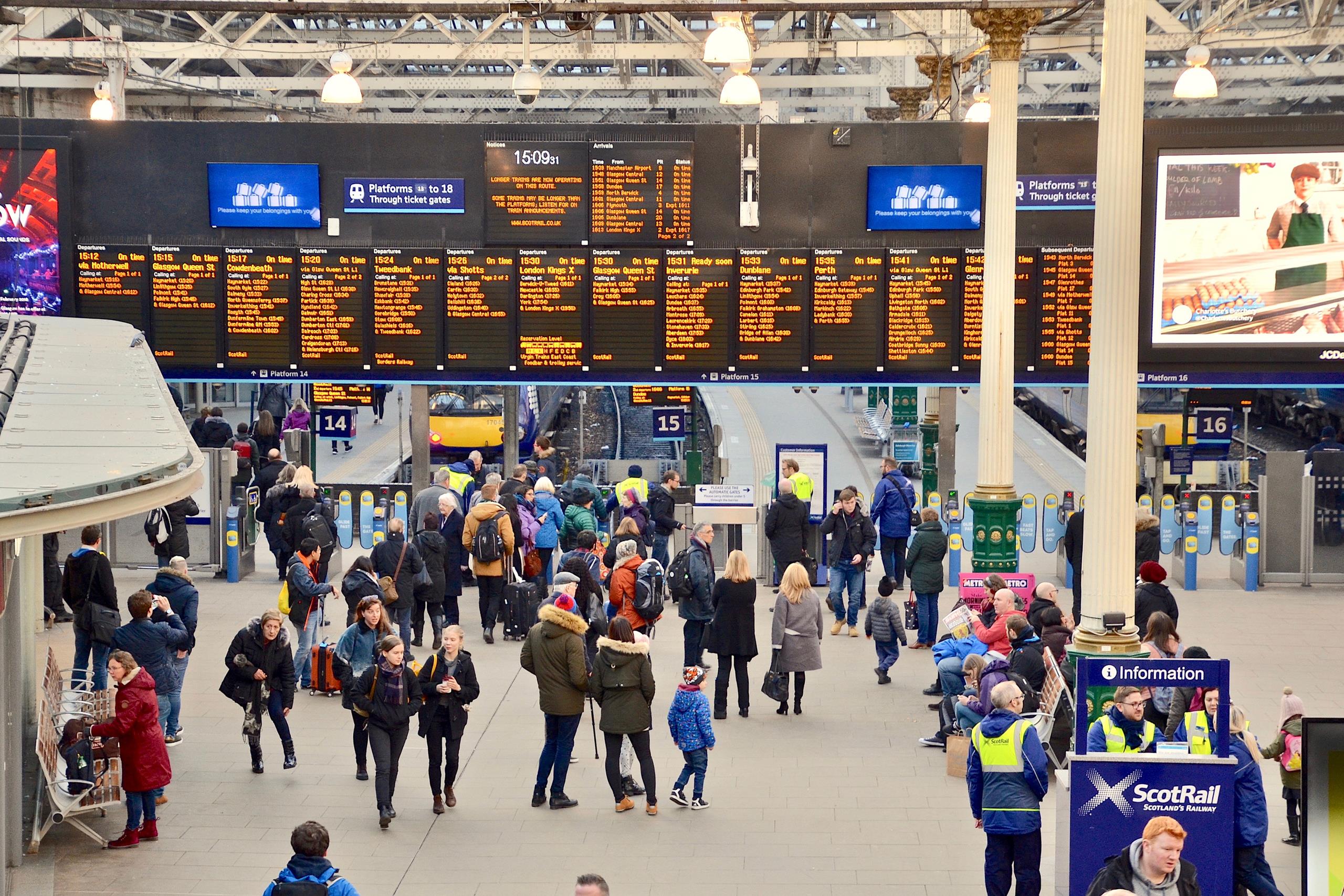Let’s make public transport accessible to all
The theme of this year’s International Day of People with Disabilities is ‘The future is accessible’. If we are to create a society where no one is left behind because of their visible or hidden impairment, transport infrastructure must be accessible to everyone, say social practitioners Giulia Scarani and Dr James Beard.
If asked to paint a picture of a fairer, better world, most of us could agree how it would look.
There would be good quality homes, low levels of poverty, secure and stable jobs, and safe and healthy communities.
Such a society would also be inclusive, with equality, choice, freedom and empowerment for all. No one would be left behind.
At the heart of this is accessibility, which means access not just to what we need, such as housing and healthcare, but also mobility – our ability to get to where we need to go – to school or work, or to see friends and family.
This is why public transport plays a critical role in social inclusion – it gives independence to those without private transport, and those who otherwise would have no means to access their social networks.
There is, however, much work to be done to make transport more inclusive; the networks we currently have don’t always meet the needs of all those who need to, or wish to, use them.
That includes not just people with a visible physical impairment, such as wheelchair users, but also those who have disabilities you might not be able to see, such as dementia, autism or a condition which makes them feel uncomfortable in crowded spaces.
In the UK, there are nearly 14 million disabled people.1 They are likely to be the first to tell you that our transport system lets them down on a disturbingly regular basis. Around one fifth of these people report having difficulties related to their impairment in accessing transport.2
Those living in rural areas will tell you how few taxis are wheelchair accessible. People with visual impairments will invariably tell you of the time they missed key information because audio announcements were not available on public transport.
By plane
What can be done? For a start, all new transport infrastructure, from bus stations to airports, should be designed by putting people, customers, all users, at the centre of the design, following inclusive design principles from the outset so it can be accessible by everyone.
This was our goal when a major international airport asked us to create an accessibility strategy to appraise the designs for its expanded terminal facilities.
The strategy not only addressed the physical barriers to accessibility, like steps, kerbs and walkways, but also provided socially-oriented spaces where users of the airport could feel calm, safe and supported.
We helped to progress the designs, applying standards and making recommendations to help deliver a fundamental new piece of infrastructure that ensured no one would face barriers to its use.
More than half (57%) of disabled passengers say they find flying and using airports difficult, according to a survey by the Civil Aviation Authority.
By designing inclusive infrastructure, we can improve the experience of travel for all air passengers.
By train
Rail is among the most popular forms of public transport in the UK, and while functional and convenient for much of the population, disabled passengers often encounter difficulties on their journeys.
In the UK, only 14% of rail stations are fully accessible, 41% of stations still have no step-free access, and only 20% provide accessible toilets.3,4,5
This is certainly a challenge for disabled passengers wanting to use the rail network, and the solution calls for more than ramps and tactile paving. It demands joined-up thinking and holistic solutions to devise transport services that are inclusive and consider ‘first to last mile’ transport solutions.
At Mott MacDonald, we have helped clients rethink rail accessibility by considering all elements of a rail journey, and how they can be improved.
Pre-travel and travel information needs to be made accessible in several formats and channels; staff need to be available and have adequate training to communicate with passengers both effectively and appropriately; stations need to be adapted as much as possible to accommodate passengers with a variety of needs; and trains, and assistance offered on trains, also need to be adequate to respond to the needs of all passengers.
Most importantly, changes to make rail travel more accessible, whether to physical infrastructure, information availability, or staff training, need to be tested with end users before they are applied to ensure they are truly delivering inclusive outcomes.
This can be done through various forms of engagement, including end-to-end accompanied journeys, as well as cross-industry co-operation in developing staff training. This level of engagement ensures that inclusive design features have real-world social impacts for the people involved.
Building a positive future
Transport is at the heart of how we live – it connects us to vital services, it enables us to contribute to society and access opportunities that can enrich our lives.
It is a key player in delivering economic opportunity, environmental quality, community cohesion, and health and wellbeing. So, if we can be better organised and work together to make transport accessible to everyone that wants to use it, the world will be a better place for it.
For more information on this year’s International Day of People with Disabilities, visit https://idpwd.org/
1 Family Resources Survey 2016-17
2 ONS Opinions Survey 2011
3 House of Commons Library
4 Access for All UK
5 House of Commons Library




